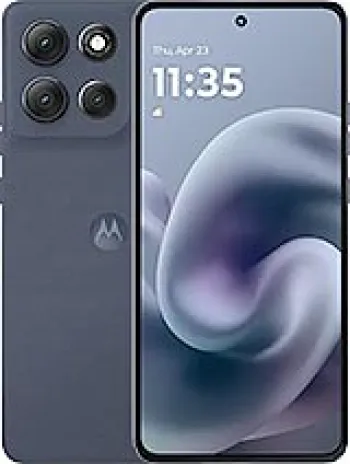
Overview of Motorola W215
The Motorola W215 was launched in early 2008 as a part of Motorola's lineup of feature phones. Despite being a basic model in comparison to modern smartphones, it served the needs of many users looking for a reliable communication device without the bells and whistles of more advanced models at that time. It offered fundamental telephony functionalities augmented by a few additional features, making it an excellent choice for users seeking a straightforward mobile experience.
Design and Build
The Motorola W215 flaunts a compact and user-friendly design with dimensions measuring 108 x 44 x 14.9 mm and a weight of just 78 grams. The build quality is typical of feature phones of that era, featuring robust plastic materials to endure everyday wear and tear. It accommodates a mini-SIM and is easy to handle, thanks to its slim profile of roughly 0.59 inches.
Display
The device sports a TFT display capable of rendering 65K colors. This color range, although limited by today’s standards, was adequate for viewing basic graphical elements and navigating the phone's simple menu systems. The display resolution of 128 x 128 pixels on a square screen allows for clarity in displaying text messages and basic icons, although media playback capabilities are very limited.
Network and Connectivity
The W215 operates on GSM technology and supports 2G bands, specifically GSM 900 and 1800. It does not support GPRS or EDGE technologies, which limits its data capabilities significantly. As such, the phone cannot host internet browsing capabilities, making it strictly a communication device. Additional connectivity options such as WLAN, Bluetooth, and USB are notably absent, consistent with its design as a basic feature phone.
Battery Life
Powering the Motorola W215 is a removable Li-Ion 850 mAh battery. Despite its small capacity, the battery life is commendably efficient due to the minimal power requirements of its operating system and display. Users can expect up to 300 hours of standby time and up to 7 hours of talk time. The simplicity of the device's functionality contributes to these impressive figures, minimizing the need for constant recharging.
Camera
The phone is equipped with a basic VGA camera. While this may suffice for capturing quick snaps, the 0.3MP resolution limits the quality and detail of photos. The camera can also record video, though this feature was more of an additional perk rather than a primary function due to the quality constraints.
Audio and Sound
The Motorola W215 has a built-in loudspeaker which provides decent audio output for calls and notifications. The device supports vibration alerts and polyphonic ringtones. However, it does not feature a 3.5mm headphone jack, limiting personal audio output options to the integrated loudspeaker. Users can listen to FM radio, which remains a popular form of entertainment in many regions, particularly useful if the user prefers over-the-air broadcast content.
Memory and Storage
In terms of storage, the W215 comes with a built-in memory of 1MB. It includes a phonebook that can store up to 500 numbers and maintains a call log for 10 dialed, 10 received, and 10 missed calls. There is no slot for an external memory card, meaning expansion of storage isn’t possible. This is adequate for the basic operations of the phone but poses limitations for users who might want to store more contacts or retain extensive message histories.
Features and Functionality
The phone runs on a basic feature phone interface, optimized for straightforward communication functions. Messaging is limited to SMS only, without support for MMS or email. There are no built-in internet browsers or Java applications, which restricts the digital functionality of the phone. However, basic games are preloaded for casual entertainment.
Market Impact and Legacy
When it was released, the Motorola W215 was priced at approximately 40 EUR, and it was positioned as an affordable, entry-level phone for consumers who needed basic telecommunication services without investing heavily in high-end technology. Even though it is discontinued, its legacy remains in the dependability and simplicity it offered, serving as an accessible phone option in emerging markets and amongst older demographics or tech-averse individuals.
Conclusion
In summary, the Motorola W215 encapsulates the function-driven philosophy of feature phones in its era. For its time, it provided users with a reliable means of staying connected through voice calls and text messages while incorporating minimal multimedia features such as a basic camera and FM radio. The simplicity and efficiency of the phone's features made it suitable, especially for those who preferred a no-frills device that focused primarily on communication.
Key Features of Motorola W215
- Lightweight design: Weighs only 78 g (2.75 oz)
- Compact dimensions: 108 x 44 x 14.9 mm
- TFT display with 65K colors
- FM Radio for entertainment
- Good battery life: Up to 300 hours stand-by and up to 7 hours talk time
- VGA main camera with video recording capability
- Polyphonic ringtones and composer for customizable alerts
- Affordable price: About 40 EUR
Drawbacks of Motorola W215
- No GPRS or EDGE support, limiting internet connectivity.
- Lacks advanced connectivity options such as WLAN and Bluetooth.
- No USB connectivity for file transfer.
- Display resolution is low at 128 x 128 pixels.
- No support for external memory cards, limited to 1MB internal storage.
- No 3.5mm headphone jack for private listening.
- Very basic camera capabilities with only a VGA camera and limited video recording.
- No self-facing camera for selfies or video calls.
- No advanced messaging features beyond SMS; lacks an internet browser.
- No support for Java-based applications or games.

View Also
More Phones
All Rights Reserved +14266 Phones © Mobilawy 2025

























